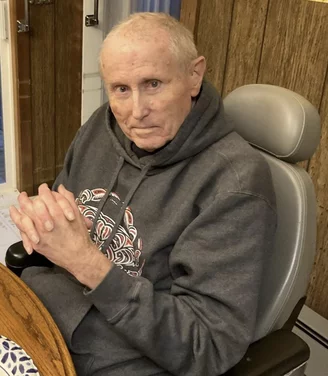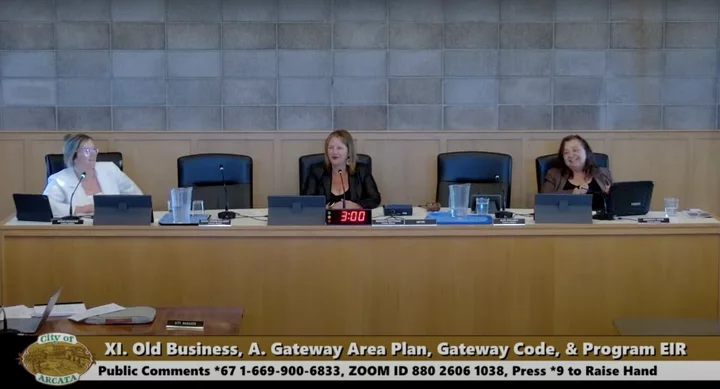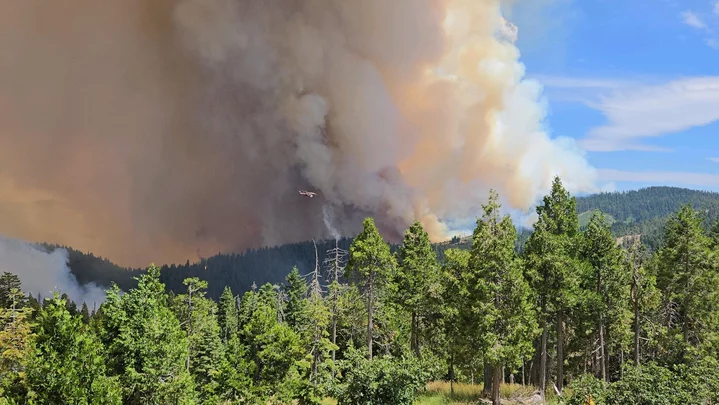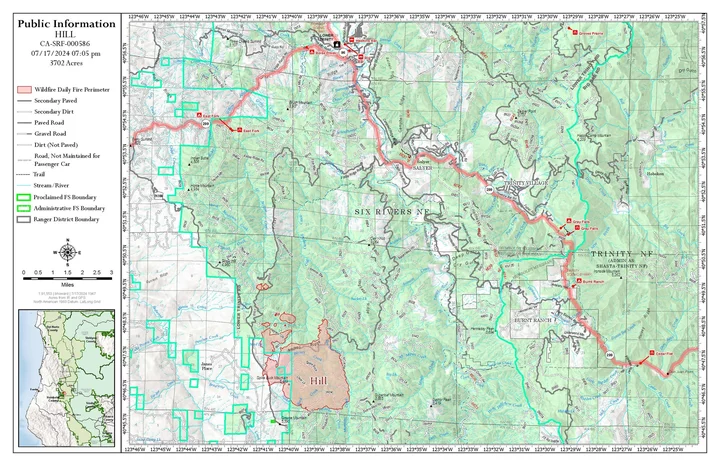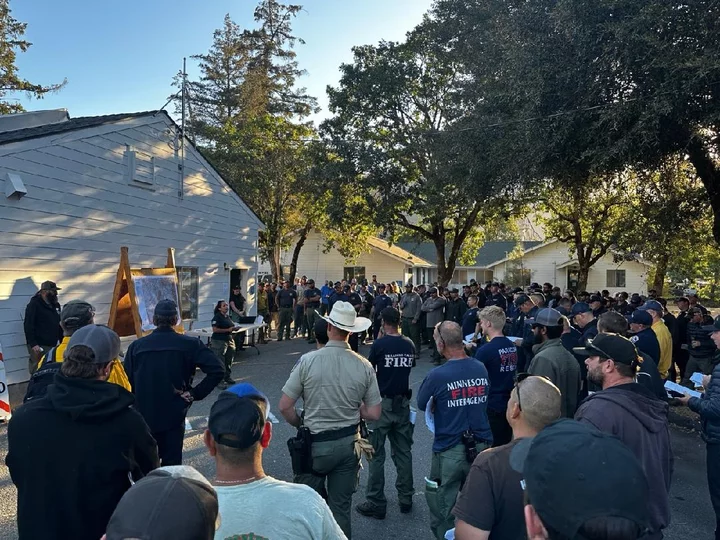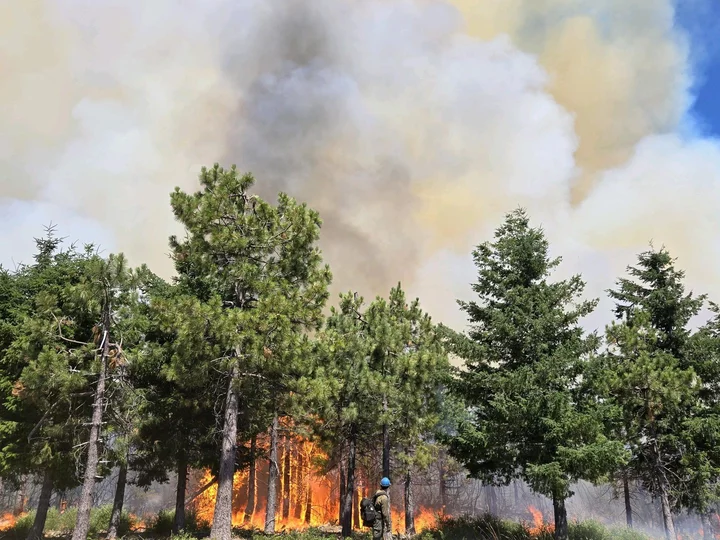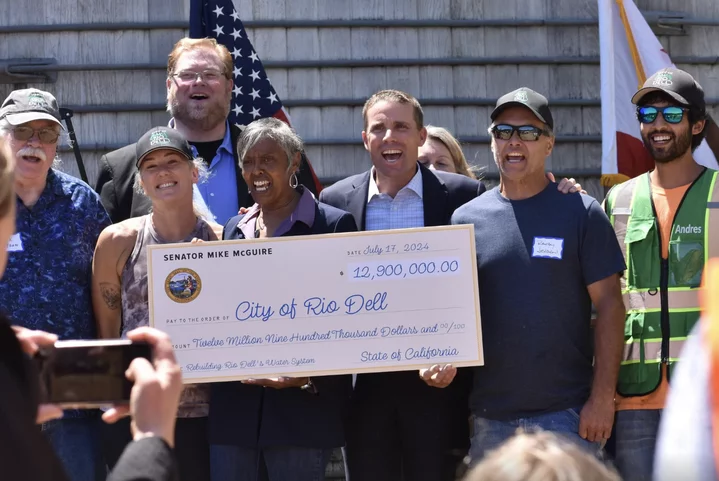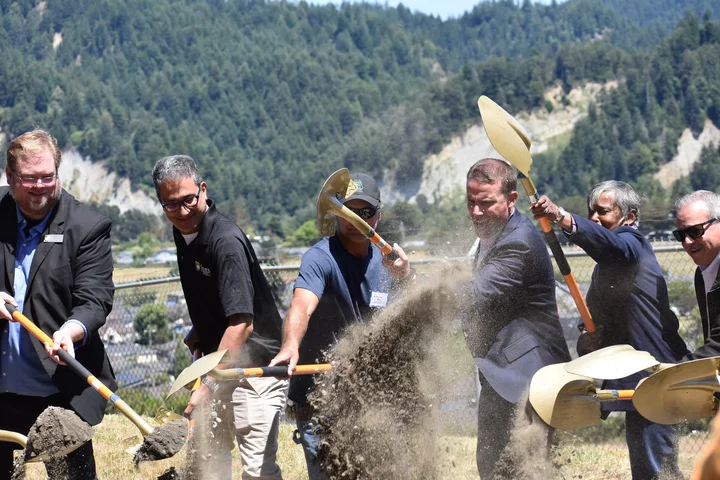OBITUARY: Sonja Heaton, 1934-2024
LoCO Staff / Friday, July 19, 2024 @ 6:45 a.m. / Obits
Sonja Jensine Heaton passed peacefully from this life to “New Life In Christ” – June 24, 2024 while in her home in Eureka at age 90 – in the loving care of her family – who Honored her with the title befitting her beauty and her grace: “Queen of the Norwegians”… A Red Headed Twin from Ana-Sira Norway who immigrated to the USA at age 19 and taught us ALL the value of hard work, laughing when crying would be easier, and never giving up - no matter the obstacles - and there were many! The BEST Norwegian pancake maker, with a beautiful voice, a great dancer too and a heart for the downtrodden whose home never knew a stranger - always feeling welcome!
In her younger days, Sonja was fast on her feet, quick with her hands as well as her wit – finding humor in the ordinary and taking pride in every task - from Waitressing to Elder Care to Retail to Supervisor of West Coast Foods and last stop as Expert Saw Filer and Welder for Schmidt Bower Lumber (the Only Female in an All Male industry – unheard of in that day – yet successfully so) and All in efforts to provide for her family as a Single Mother of Five. With a great support system of family and friends, Mamma Sonja, as she was also fondly called, would strive to always OVERCOME and be that listening ear for her family and Others … to do the same!
A GREAT cook, who loved Bette Davis movies, the Opera of Mario Lanza and Gospel Inspiration of Mahalia Jackson (and, YES, her talented musical family as well!), MOM was also very competitive – in cheering on Team Norway for the Winter Olympics to her favorite NFL Vikings and Raiders - to picking shrimp – faster than the eye could see - to Harley Motorcycle Riding at Age 80 – and this just for starters! Mother was also a Life Long Member of the Sons of Norway (Lodge No. 13). Her love of Norway never left her, but her home in Humboldt County for 52 years - would be her mainstay AND final landing!
HER LIFE and LEGACY are her CHILDREN
JESUS is her SAVIOR
And WE as a FAMILY
Are ETERNALLY Grateful! (John 3:16)
THANK you MOM … for giving us the GIFT of LIFE
And then “GIVING us to JESUS” the ONE you KNEW would never Leave, Fail or Forsake us!
God PROVED that HE was and is FAITHFUL … And on that WE ALL agree!!
(Jeremiah 29:11)
With Honor, Gratitude and In Loving Memory,
Your Children,
Jensine Linda Bard, Daniel Lee Hawk, Cynthia Marie Christiansen, Austin Allan Backus and Lisa Renee Backus
SONJA is PRECEDED IN DEATH by her Parents: Einar and Jenny Daastol; Brother: Erling Daastol, Twin Sister: Judith Egeland and her Daughters: Laila Ottersen and Aina Egeland; Brother-In-Law: Sivert Log and Nephew, Tollak Log – All of Blessed Memory. SONJA is SURVIVED by her Five (5) Children and their Spouses: Jensine (and Daniel) Bard; Daniel (and Renee-Rosenberg) Hawk; Cynthia (and Gary) Christiansen; Austin (and Belinda) Backus; Lisa Backus; Four (4) Grandchildren: Gabriel (and Sam Hinton) Hawk; Nathan Hawk; Zachary (and Roxie) Christiansen; Benjamin (and Sonja) Christiansen; Four (4) Great Grandchildren: Cameron (and Sarah) Christiansen; Cody Christiansen; Benjamin Christiansen (Son of Benjamin and Sonja) and Sonja Hawk (Daughter of Gabriel Hawk and Sam Hinton). Beloved Sister: Olga Log and Nephew, Alvin Log; Beloved Sister-In-Law: Colleen Daastol – Her Children and their Spouses: Philip (and Linda) Daastol; Karen (and Steve) Nichols; Jana (and Dennis) Brown and numerous Nieces and Nephews both in the U.S. and in Norway (Diana Ottersen and Family; Cathrin Ottersen and Family; Madelen Ottersen and Family; Einar (and Inger Johanne) Egeland and Family; Lena Egeland Hogstad and Family; Jannicke Egeland and Family) and gratefully so!
###
The obituary above was submitted on behalf of Sonja’s loved ones. The Lost Coast Outpost runs obituaries of Humboldt County residents at no charge. See guidelines here.
BOOKED
Yesterday: 7 felonies, 9 misdemeanors, 0 infractions
JUDGED
Humboldt County Superior Court Calendar: Today
CHP REPORTS
No current incidents
ELSEWHERE
KRCR: Humboldt County seeks public help in identifying remains found in Eel River
KRON: PG&E electricity rates are down — but your bill might not be
KRON: Nearly 100 drivers caught going more than 100 mph during CHP New Year’s enforcement
SF Gate: Trump admin official reportedly made millions from fast-tracked lithium mine
OBITUARY: Douglas Jager, 1939-2024
LoCO Staff / Friday, July 19, 2024 @ 6:45 a.m. / Obits
It is with heavy hearts that we announce the passing of Douglas John Jager, PhD, Emeritus Professor of Forestry and Watershed Management, Humboldt State University. Doug died on June 7, 2024, at his north Trinidad home with his loving family by his side.
Born in Oakland, California, on New Year’s Eve 1939, Doug boasted that he never had to go to school or to work on his birthday and that people across the nation celebrated his special day.
The middle child of Cornelius and Anne Jager, Doug grew up in east Oakland living next door to his Dutch immigrant Vermeer grandparents at a time when it was safe to ride his bicycle around the area. One of his favorite childhood adventures was to ride horses with his friend all over the Oakland Hills. An industrious lad, Doug had a paper route, helped an electrician, worked for a medical supply company, pumped gas in a service station, and set tile with his dad.
After graduating from Fremont High School in Oakland, Doug attended junior college and then transferred to Humboldt State College where he majored in forestry. On campus, in the dining room of the Nelson Hall dorm, he met Nancy Foster, an elementary education major from Ukiah, California. They were married on August 13, 1961, at the Ukiah Methodist Church and had sixty-two wonderful years together.
Doug loved teaching and the interactions with his students. He began as a teaching assistant in forest engineering during his junior year at Humboldt State. After earning a Bachelor of Science in Forestry, he continued to teach in both forestry and watershed management while earning his Master of Science in Forestry. He then went on to teach forestry at the University of Nevada while completing his PhD in Wildland Hydrology. Doug returned to Humboldt State in 1973 as a professor of Forestry and Watershed Management and retired as Emeritus faculty in 2000. He was known as a hard teacher, earning the nickname of “clear cut.” He was not sure if it was because of his short haircut or his forestry philosophy.
Doug and Nancy, a retired elementary school teacher, have two wonderful children. Christopher, a retired commercial fisherman and fishing boat captain, was born in 1967 in Arcata. Doug passed down his love of fishing and firewood cutting to Chris. Sally was born in 1969 in Reno, Nevada, and is a retired elementary school teacher. Sally inherited Doug’s passion for horses at an early age. Chris and Sally both took excellent care of their dad during his senior years and final days.
Throughout the years Doug had many hobbies. He enjoyed riding his bicycle and motorcycle, driving his sports car and tractor, sailing his catamaran at Big Lagoon with his family, canoeing the local rivers and lagoons, and boating at Lake Tahoe and Big Lagoon. Doug also loved surf, bass, trout, and ocean fishing, horseback riding at the local beaches, Trinidad State Park, and Redwood National Park, growing and selling Redwood tree saplings to the locals and tourists of Humboldt County, and sitting around the backyard pool reading, visiting, napping, and enjoying the beautiful outdoor surroundings of his home of over fifty years. During their later years, Doug and Nancy traveled the western states in their motorhome and enjoyed cruises to Mexico, Alaska, and Hawaii with family.
In 1985 Doug started 4-H TRAIL, a Humboldt County 4-H program, to provide therapeutic horseback rides to individuals with special needs. With the help of countless volunteers, the program took place in the backyard of his north Trinidad property, widely known as Camelot Stables. Doug enjoyed sharing his love for horses with others. Doug was a fearless horseman and had a lot of great trail rides on his favorite bold horse named Bert. Participants and volunteers of 4-H TRAIL will remember Doug’s entertaining stories about the “Molagoona’s” unique nesting habits in the woodshed and about their sneaky shenanigans in the surrounding Redwood trees in the Trinidad area. The 4-H TRAIL program is still ongoing under the direction of Doug’s daughter Sally. Doug had received the Horseman of the Year award from the Northern California Horseman’s Association for his dedication to 4-H TRAIL and the horse community. In 1980 Doug opened a retail horse tack and equipment store called Camelot Tack. He was well known for catering his inventory to the English equestrian and providing excellent customer service. Somehow, in a small storefront at the stable, Doug managed to stock everything a horse person may ever need. Doug was a forty-year Humboldt County 4-H Project Leader. In 2008 he received the League of Women Voter’s award for contributions to the community.
Doug was a registered professional forester and had worked on Redwood tree and watershed research and projects in Southern Humboldt and Northern Mendocino counties including the Mattole and Bull Creek areas. A conservationist, he belonged to numerous groups including The Society of American Foresters, the Nature Conservancy, the Sierra Club, and the Audubon Society. He was a founding member of CHERT, a Humboldt County team of scientists reviewing and making recommendations on gravel extraction on the Mad, Van Duzen, Smith, and Eel rivers. Doug previously served on the local Trinidad Volunteer Fire Department and was a past president of Rural Trinidad.
Doug was preceded in death by his parents Cornelius and Anne Jager, stepfather Victor Fogh, older brother Clifford Jager, daughter-in-law Colleen Jager, in-laws Alfred and Vivian Foster, brother-in-law Martin Davis, and sister-in-law Linda Foster.
Doug is greatly missed by Nancy, his devoted and loving wife of sixty-two years, son Christopher Jager (Greta Daniels), daughter Sally Friedley (Clifford), grandsons Travis Pederson (Candace), Aaron Friedley (Josephine Fodge), and Chris Friedley (Jasmine Collins), his younger brother William Jager (Sharon), sister-in-law Odette Jager (Clifford), Nancy’s siblings Susan Davis, Tom Foster, and Bonnie Snearly (Larry) as well as many adoring nieces, nephews, and cousins.
The family would like to express sincere thanks to the local medical community for many years of excellent care. Special appreciation goes out to Sophia and her staff at Providence St. Joseph Home Health, as well as Dr. Larry Senffner, Dr. Steven Aussenberg, Dr. John Fjerstad, and Dr. Thomas Taylor and their staffs.
No services are planned. A private family gathering will be held later. In lieu of flowers, donations to honor Doug may be made to 4-H TRAIL, 349 Stagecoach Road, Trinidad, CA 95570, or to a charity of your choice. Feel free to skip a rock across a stream or lake, listen to Andre Rieu orchestra music, play a game of solitaire, chop some wood and build a fire in the wood stove, eat a bowl of ice cream, or take a horseback ride in Doug’s memory.
###
The obituary above was submitted on behalf of Douglas’s loved ones. The Lost Coast Outpost runs obituaries of Humboldt County residents at no charge. See guidelines here.
HELLO, GATEWAY: Arcata City Council Passes Gateway Area Plan and Welcomes New City Manager Merritt Perry
Jacquelyn Opalach / Thursday, July 18, 2024 @ 5:06 p.m. / Local Government
Arcata City Council Member Sarah Schaefer, Mayor Mayor Meredith Matthews and Councilmember Kimberley White discuss approving the Gateway Area Plan. Screenshot.
The Arcata City Council approved a final draft of the Gateway Area Plan last night, nearly four two and a half years after the City published a first draft of the blueprint to infill 139 acres of southwest Arcata with high-density housing.
The Council tied up loose ends related to the linear park along L Street and discussed how recent alarm over fire safety in the high-density neighborhood can and will be addressed post-plan approval. (Vice Mayor Alex Stillman and Councilmember Stacy Atkins-Salazar recused themselves from the Gateway Area-related discussion due to conflicts of interest.)
What will happen to L Street has been one of the plan’s hotter topics throughout its development. The street was once slated to become a one-way (in addition to K Street) but the City Council ditched that idea after it stirred opposition in the community.
In its final draft, the plan directs the City to get started on a linear park and a woonerf along L Street – stretching from Samoa Blvd. to 11th Street – within two years.
The plan defines a woonerf as “low-flow, slow-speed, local traffic only street that is designed to safely accommodate bikes, pedestrians, and play, as well as limited use for vehicles,” while a linear park is vehicle-free. Councilmember Sarah Schaefer said it’s likely the woonerf will run from 7th Street to 11th Street (where there is already an existing road), and the linear park will go from 7th Street to Samoa Blvd. Though some commenters asked for specific wording in the plan to guarantee restrictions for the woonerf and linear park, the Council opted to keep the language more open-ended.
Fears over fire safety in the to-be-densified neighborhood have become the other sticking point for some Arcatans. Arcata Fire District Board President Eric Loudenslager and Fire Chief Chris Emmons have said that the fire department currently lacks the staff and resources to address emergencies in tall buildings. An investigation released last month by the Humboldt County Civil Grand Jury found that the department is indeed financially strained.
However, a standards of coverage analysis co-funded by the City of Arcata, the Arcata Fire District and Cal Poly Humboldt will assess future needs of the department, and may identify potential funding sources. That’s expected to wrap up in October.
Public commenters appeared to again call out potential fire risks. Their concern is this: the plan will be passed, buildings will be built, people will move in, and the fire district will fall short in an emergency.
But that series of events excludes some processes and doesn’t reflect how long each of those steps will take, Arcata city staff and council members pointed out. For instance, the standards of coverage analysis will be far past complete by the time builders break ground, and avenues to funding and resources may be well on their way.
When the standards of coverage analysis is done, the Council may amend the plan or code as needed, City Manager Karen Diemer said; it’s a living document.
Meanwhile, the City is actually waiting on the Arcata Fire District board to develop language for fire code. Although there is, technically, fire code currently included in the Gateway Code, “it cannot be effective until the fire department takes action, sends that ordinance to us, asks us to adopt it, [and then] we can either adopt it as is, or amend it,” Community Development Director David Loya said. “Then it will be effective in our code.”
“I know this is an issue that has captured our imaginations,” Loya said. “The reality is that modern building code builds buildings that really don’t catch on fire like that. They’re sprinklered, you’re not going to have a Chicago-style blaze where these buildings are burning down.”
Mayor Meredith Matthews pointed out that local fire departments provide mutual aid, and that seven story buildings are already underway within city limits.
“I think that this fear that: ‘oh my god, it’s gonna happen, and people are gonna be unsafe, and they’re gonna die in a multistory building fire’ is really really outlandish and unrealistic and probably not going to happen,” Councilmember Schaefer said.
“The fire marshall signs off occupancy of buildings, and if we were really in a dire situation where the fire department said: ‘there is no way we can help defend this building,’ then they’re not gonna certify its occupancy and let people live in it.”
Although Councilmember Kimberley White was more concerned than her peers about the fire issue, the three ultimately passed a motion to approve the Gateway Area Plan and Environmental Impact Report, and to introduce an ordinance to adopt the Gateway Code (which will likely be approved at their Aug. 7 meeting).
After Vice Mayor Stillman and Councilmember Atkins-Salazar rejoined the group, the Council quickly and unanimously passed the General Plan 2045. The meeting ended with the Council’s approval to hire Merritt Perry as Arcata’s new city manager. He will replace Diemer next month.
Perry told the Council that he’s always loved opportunities to work in Arcata, from his years as an environmental resources engineering student at Humboldt State University to his time as a consultant in the civil engineering field.
“It was something that always really excited me, to be able to work where I went to school, and I received my education, where I raised my kids,” Perry said. “So I’m really excited at the opportunity to get to know the Council better and to hear the Council’s ideas, and to get to know the community.”
(UPDATE: ARRESTS MADE) (VIDEO) Shirtless Man Spews Racial Insults, Teen Girl Appears to Aim Gun at Onlookers During Arcata Plaza Confrontation; Three Detained After Traffic Stop
LoCO Staff / Thursday, July 18, 2024 @ 2:59 p.m. / Crime
Video submitted by Neko Taylor and Matt Filar. | Edited by Andrew Goff.
###
Officers with the Arcata Police Department detained two adults and a juvenile earlier this afternoon following a tense altercation involving a possible firearm at the Arcata Plaza, according to the Mad River Union.
As seen in the reader-submitted video above, a shirtless man and a teenage girl were confronting onlookers in the street at the corner of Eighth and H Streets, near Jacoby’s Storehouse. The teenage girl can be seen pointing a long gun, possibly a BB gun, at people on the street and screaming “Everybody down!” as the man follows, shouting, throwing punches and spewing racial slurs at another man.
Arcata Police Lt. Chris Ortega told the Mad River Union that the two, along with another adult, were detained at Samoa and F Streets after a “high-risk” traffic stop.
“We’re currently investigating to determine if this was a real firearm, a facsimile firearm or what it actually was,” Ortega told the Mad River Union, noting that no one was harmed in the incident.
The Arcata Police Department did not respond to the Outpost’s immediate request for comment. We’ll update this post when we know more.
Arcata Police officers arrest the teen suspect. | Photo by Matt Filar.
The Arcata Police Department has issued the following release about the incident:
On Thursday July 18, 2024, at 12:46pm, The Arcata Police Department responded to the Arcata Plaza on citizen reports of a physical altercation involving a female pointing a firearm at multiple subjects.
An officer in the immediate area located a black Toyota Tacoma leaving the Plaza which was identified by witnesses as being associated with the suspect in possession of the firearm. A high-risk traffic stop was initiated at the intersection of F Street and Samoa Boulevard. The occupants of the Tacoma, one adult male, one adult female and one juvenile female were detained. The investigation revealed the juvenile female had pointed a BB rifle at various persons on the Plaza during an altercation involving the adult male and another adult male. The BB rifle was located inside the vehicle.
The driver, 40-year-old Eureka resident James Lee Boone, was placed under arrest and booked at the Humboldt County Correctional Facility for misdemeanor Assault & Battery.
The juvenile female was booked at the Humboldt County Juvenile Hall for a misdemeanor violation of Brandishing an Imitation Firearm. The adult female was released from the scene.
Anyone who witnessed the altercation is encouraged to contact the Arcata Police Department at 707-822-2428.
(UPDATE) MISSING: 14-Year-Old Boy Went Missing in Cutten at Midnight Last Night
LoCO Staff / Thursday, July 18, 2024 @ 12:14 p.m. / Missing
(UPDATE: We have removed the name and photo of the missing juvenile because he has been found.)
Eureka Police Department release:
The Eureka Police Department and the Humboldt County Sheriff’s Office are seeking the community’s assistance in locating 14-year-old [name removed after he was found] who went missing around midnight last night near Winship School in Cutten.
[removed] is described as a 14-year-old, white male, 5’10/140 lbs, with light brown hair and brown eyes. He was last seen wearing a grey hooded sweatshirt, blue jeans, black socks, and black shoes.
If you have any information, please contact the Eureka Police Department at 707-441-4060 or the Humboldt County Sheriff’s Office at 707-445-7251.
Hill Fire Grows to Over 4,000 Acres; Fire Activity Has ‘Moderated,’ Officials Say
LoCO Staff / Thursday, July 18, 2024 @ 10:12 a.m. / Fire
Photos: SRNF
The Hill Fire burning south of Willow Creek is now listed at 4,600 acres as of Thursday morning, with 0% containment. Growth has slowed compared to previous days, but crews continue a full suppression effort which is detailed in the Six Rivers National Forest release below:
Yesterday, fire activity moderated compared to previous days. Fire managers are using a full suppression strategy with crews going direct where possible while also utilizing indirect tactics in areas that pose a potential risk to firefighter safety. A few spot fires were identified to the north along Friday Ridge and resources on scene began constructing direct and indirect containment lines. Crews constructed dozer lines to the west and north of the fire. Aircraft continued to perform retardant drops along the perimeter of the fire.
The latest Hill Fire perimeter map. Click to enlarge
Today, the primary focus will be to the north of the fire where crews will scout for possible opportunities to construct direct dozer line south of Route 1. Firefighters will also conduct firing operations along Route 1 to strengthen the potential containment line along Friday Ridge. Aircraft will continue to perform retardant drops to slow the spread of the fire. Federal and state air resources on scene include helicopters, air tankers, and air attack. Fire behavior is expected to be moderate today with continued dry conditions. The North Coast Interagency Type 3 Incident Management Team and CAL FIRE Incident Management Team 2 are now fully integrated and working in unified command.
Fire camp will be at the Veterans Park in Willow Creek, CA., beginning today, July 18, 2024.
Sen. Mike McGuire, Community Leaders Break Ground on State-Funded Water System Rebuild in Rio Dell
LoCO Staff / Thursday, July 18, 2024 @ 9:58 a.m. / Infrastructure
From left to right: Rio Dell City Councilmember Frank Wilson, Mayor pro tem Amanda Carter, City Manager Kyle Knopp, Mayor Debra Garnes, Senator Mike McGuire, Supervisor Michelle Bushnell, Rio Dell Water Superintendent Randy Jensen, Rio Dell staff. Submitted.
###
Press release from Senate President Pro tem Mike McGuire:
RIO DELL – Today, Senate President pro Tempore Mike McGuire (D-North Coast), state and local leaders, and the Rio Dell community celebrated the groundbreaking of a total rebuild of the city’s water system, which was extensively damaged in the 2022 earthquake.
The $12.9 million investment from the State of California was approved in the days following the 6.4-magnitude earthquake. Once completed, Rio Dell’s aging water system will be fully replaced, at no cost to local ratepayers.“After that December 22nd quake shook the Eel River Valley, Rio Dell’s water system was near total collapse,” said Pro Tem McGuire. “We committed to Rio Dell neighbors that the State would deliver, and today, a promise made is a promise kept. Nothing is more essential than clean and reliable drinking water. This rebuild will be a massive shot in the arm for the City for decades to come and will save residents millions, since the State is covering all costs associated with the project.”
Once completed, the new water system will include 2.85 miles of new piping, 279 updated service lines to homes, 30 new fire hydrants, and five new highway under crossings.
“This project is about making sure Rio Dell is a safe and thriving community for generations to come. And at zero cost for local residents who are already struggling to get back on their feet, this is a huge win for our community,” said Rio Dell Mayor Debra Garnes. “We’re so grateful for Senator McGuire’s and the State Office of Emergency Services partnership, for their commitment and follow through to get this job done for Rio Dell.”Construction is expected to start this summer with the demolition of an out of service, dilapidated redwood tank, that will be replaced by a modern and structurally-sound concrete tank with twice the storage capacity that will serve the community for decades to come.
###
Breaking ground! From left to right: Kyle Knopp, Cal OES Recovery Assistant Director Robert Troy, Randy Jensen, Sen. Mike McGuire, Mayor Debra Garnes, and former Cal OES Director Mark Ghilarducci. Submitted.


